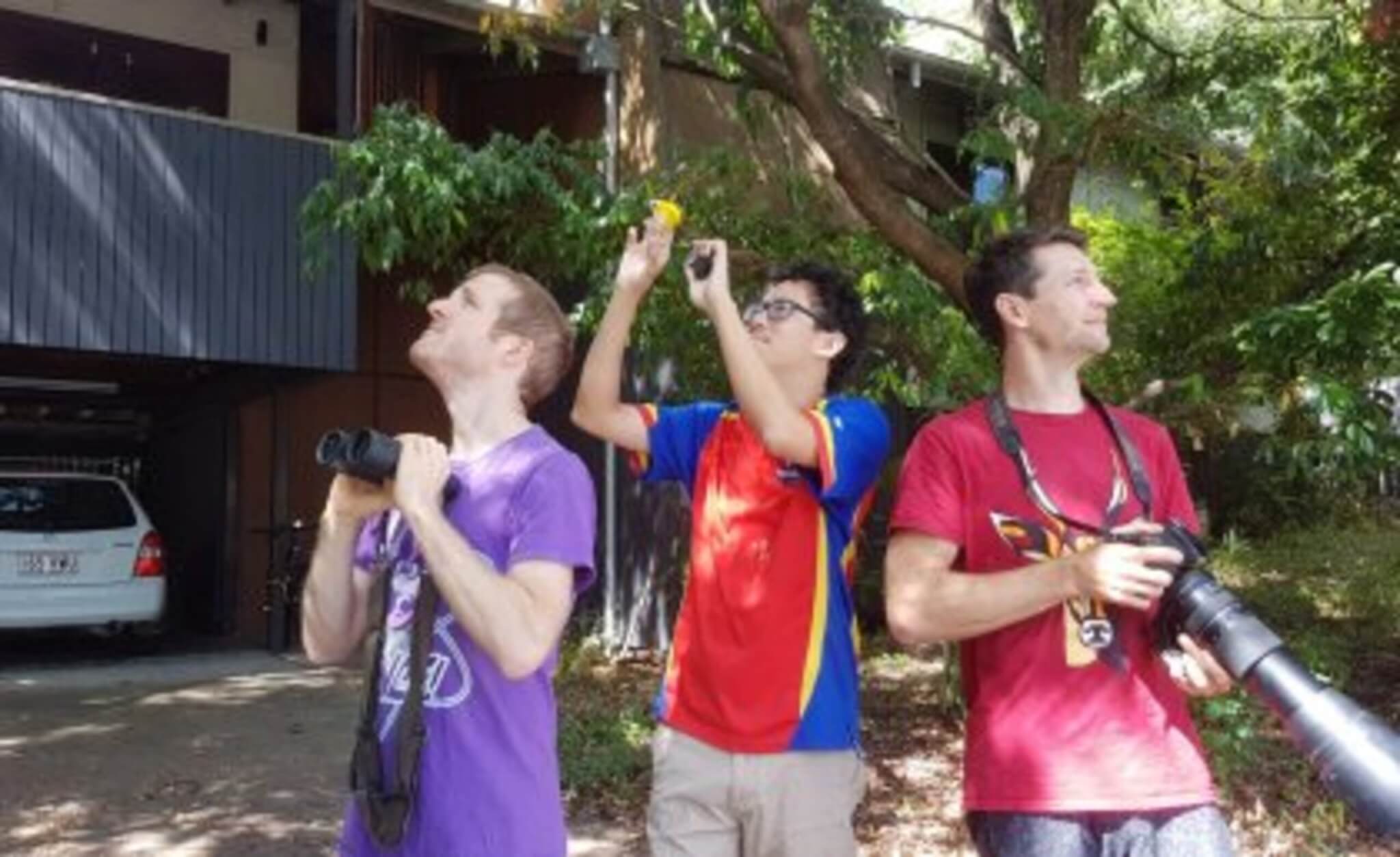BRISBANE, Australia — It may sound like an episode of “The Big Bang Theory,” but a real-life trio of scientists spent their time in COVID lockdown discovering hundreds of new species in their own backyard! These three Australian roommates stumbled upon a hidden world of biodiversity in their neighborhood, finding more than 1,000 species in total.
Now, what began as a casual challenge among these friends has resulted in a creative academic research paper showcasing the incredible variety of species thriving in urban landscapes. The trio behind this discovery includes Dr. Matt Holden, a mathematician at the University of Queensland (UQ), Dr. Andrew Rogers, an ecologist, and Dr. Russell Yong, a taxonomist.
During the pandemic lockdowns in 2020, they decided to embark on a species census of their house and its surroundings. Over the course of a year, their efforts revealed an astonishing 1,150 unique species of animals, plants, and fungi.
“We asked a large number of ecologists and conservation scientists how many species they’d expect to find in this setting and they predicted only 200,” says Dr. Holden in a university release. “But after 60 days of surveying, we’d already discovered 777 species. It shows suburban houses and apartments could have far more biodiversity than ever imagined, especially when it comes to insects.”

The idea for this species count emerged when Dr. Rogers pondered the number of spiders inhabiting their property while vacuuming cobwebs in his room. This curiosity led them to embark on a quest to explore their home and yard in search of other creatures that shared their living space.
Their survey unveiled a remarkably diverse array of species, including 436 moth and butterfly species, 56 distinct spider species, eight reptiles, and 56 types of birds. The bird species they found ranged from tawny frogmouths to laughing kookaburras, blue-faced honeyeaters, rainbow lorikeets, spotted doves, and the beloved Australian white ibis.
“Blue-tongued skinks hibernated under the garage and at night blue-banded and teddy-bear bees slept in the hedges under the front window,” explains Dr. Holden.
Perhaps most astonishingly, their research revealed three species that had not been previously recorded in Australia’s leading biodiversity database, the Atlas of Living Australia. These included a mosquito, a sandfly, and an invasive flatworm called Platydemus manokwari, which is known for causing declines in native snail populations around the world.
“The house was a complex ecosystem of species interacting — we stumbled upon the moth Scatochresis innumera, which as a caterpillar spends its whole time feeding inside the dung of a brushtail possum before emerging as an adult,” notes Dr. Holden. “The Parilyrgis concolor is another moth species whose caterpillar lives in spider webs and devours spider poop to survive.”
One of the most intriguing findings was the Parilyrgis concolor moth species, whose caterpillar resides in spider webs and survives by consuming spider excrement.
Dr. Holden emphasized that similar biodiversity could exist in homes across urban areas.
“It depends on how people tend to their homes and gardens – keeping low maintenance trees and shrubs and eliminating manicured lawns and pesticides will significantly boost the number of critters found,” says Dr. Holden. “You don’t have to go traveling to connect with Australia’s diverse range of species, just look in your own backyard.”
The study is published in the journal Ecology.
You might also be interested in:
- 200-million-year-old mass extinction event may be happening again right now
- 5,000 new species discovered in the Pacific may already be threatened by humans
- Our growing world in 2022: Here are some of the 146 spectacular new species discovered last year

